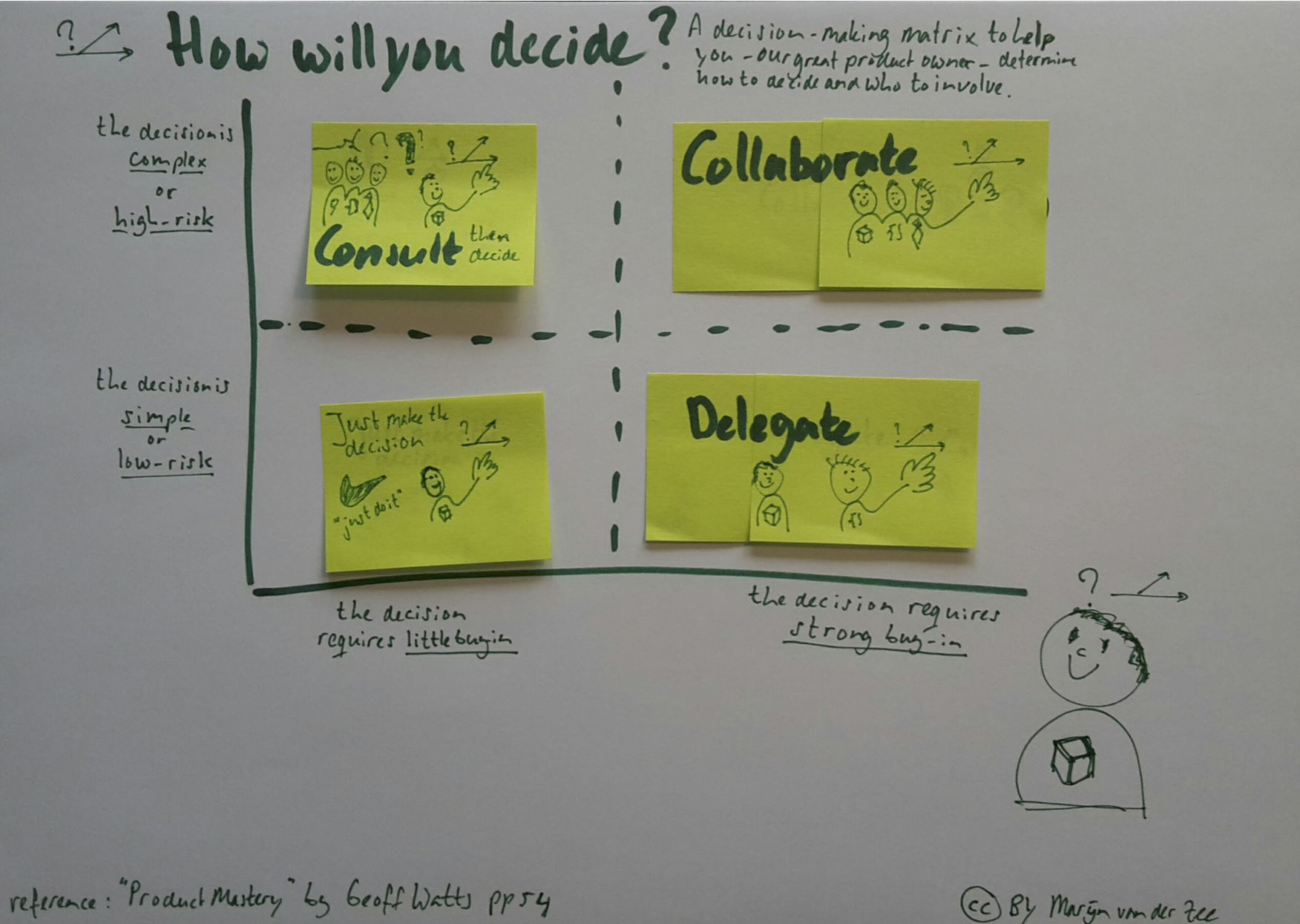Great product owners realize that they often have to make decisions based on imperfect or incomplete information. They are decisive: they delay decisions when they can and will decide when they must. Making decisions and being open to the results is a great way to foster empiricism. We rely on the product owner to keep the work flowing to the team, allowing quick verification of our highest value assumptions.
A great product owner realizes that although he is the one finally accountable for each decision made, each decision should clearly reflect the shared vision of the stakeholder team. Not every decision is the same and it can be useful to have a strategy on how you make decisions and who you will involve in the decision making. In “Product Mastery” Geoff Watts recommends using a decision making matrix for this:
Based on the complexity and risk of the decision and the buy-in the decision requires from the stakeholders, the matrix allows you to pick a tactic to make the decision.
Think of some of your decisions in the last two sprints. Where would you place them on the decision matrix? Which tactic did you apply to make the decision? Which tactic would you apply if you were to face a similar decision?


Comments
Leave a comment